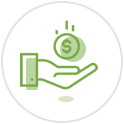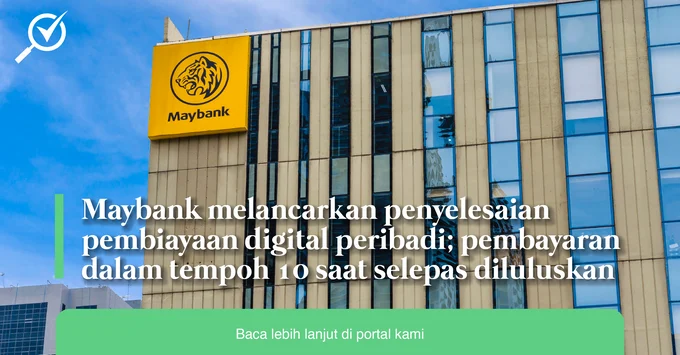What Is A Low Income Personal Loan?
Low-income personal loans refer to those loans that are offered to people with low-income. While there aren’t many personal loans for low earners, there are still some institutes that will offer you low-income loans if you meet their eligibility criteria.
How To Apply For A Low Income Personal Loan?
You can apply for a low-income personal loan in 2 ways: offline or online.
When you apply offline, you have to apply on your own. You need to go to the bank of your choice, speak to a loan officer, fill up the application form, present your documents and submit the application.
On the other hand, applying for a low-income personal loan online is far more convenient. You can use CompareHero to easily find and compare the best low-income personal loans offered in Malaysia. You can also use other online tools to find out your credit score, calculate loan affordability, download statements, and many more!
Who Can Apply For A Low Income Personal Loan?
Banks offer low-income personal loans to all Malaysian citizens. Here are the eligibility criteria for these loans:
| Criteria |
Requirements |
| Minimum Age |
18 or 21 (Depends on Bank) |
| Maximum Age |
60 |
| Minimum Income |
RM1000 to RM2000 (Depends on Bank) |
Do You Have To Be A Full-time Employee To Apply?
It’s not mandatory to be a full-time employee to apply for a low-income personal loan. However, like most loans, you will find it easier to get your low-income loan approved if you are a full-time employee.
Advantages Of A Low Income Personal Loan
1. These loans are multi-purpose
A low-income personal loan is versatile. You can spend the money from these loans on any personal expenses, including tuition fees, medical bills, wedding, holiday, and more.
2. Excellent credit is not required
You don’t need excellent credit in order to apply for a personal loan. Some lenders provide low-income personal loans even if your credit is not top notch.
3. Equal Installments
For any low-income personal loan, your installments will be equal throughout your loan tenure.
4. Fast loan approvals
Low-income personal loans are usually approved quite fast. If you apply online through CompareHero, you can have your loan approved within a few hours! After the loan gets approved, you can receive the money into a bank account of your choice.
Disadvantages Of Low Income Personal Loan
Even though there are numerous benefits of low-income personal loans, these are not without disadvantages. Here are some drawbacks of low-income personal loans:
1. Your monthly payment and loan term are fixed
Many borrowers find fixed monthly payments beneficial, however, they can be a headache if you’re used to small monthly minimum payments and having as many years as you want to pay off credit cards.
2. They have higher interest rates than other loans
Depending on your eligibility criteria, interest rates for low-income personal loans can be higher than some loans. Personal loans are sometimes advertised at very low rates, but usually, the best rates are available to applicants with the best credit.
3. They attract scammers
You might get scammed while taking personal loans from dodgy lenders. You should always make sure to take every precaution and find out whether your lender is legitimate or not. For better safety, you can apply for low-income personal loans to reputable banks online through CompareHero.
4. You can be penalized for early settlement
Personal loans can come with a lot of different fees and charges. One of those common charges is the prepayment penalty. In simple words, if you pay off your debt before your loan tenure is over, the bank can charge you a penalty.
How To Calculate Monthly Repayment Of Low Income Personal Loan?
While low-income personal loans are suitable for those who have an urgent need for money, you still need to have a minimum salary or monthly earning to apply for one. There are banks that will offer low-income personal loans even if your monthly salary is as low as RM800.
For example, if you have a minimum income of RM1,500 per month, you can apply for a maximum RM30,000 personal loan from RHB Easy Pinjaman. Here are the calculations if you are looking for a low-income personal loan of RM20,000 from RHB Easy Pinjaman for 5 years at a flat interest rate of 10% per annum:
|
Example |
| Loan amount |
RM20,000 |
| Loan tenure |
5 years (60 months) |
| Loan interest rate |
10% p.a. flat |
How much interest to be paid over 5 years?
= RM20,000 x 10% p.a.
= RM2,000 per year x 5 years
= RM10,000
What is the total amount you repay over 5 years?
= RM20,000 + RM10,000
= RM30,000
What is the monthly installment?
= RM30,000 ÷ 60 months (5 years)
= RM500
For this RM20,000 loan, you would have to pay RM10,000 interest over 5 years. So your total payment over 5 years would be RM30,000 and your monthly installment would be RM500.
Top Low-income Personal Loans For Salaried Employees
| Minimum Monthly Income (RM) |
Bank / Finance Company |
| 800 |
CIMB |
| 1,000 |
JCL |
| 1,500 |
RHB |
| 2,000 |
Hong Leong Bank |
Top Low Income Personal Loans For Government / GLC Employees
| Minimum Monthly Income (RM) |
Bank / Finance Company |
| 750 |
RHB |
| 800 |
Bank Rakyat (for pensioners) |
| 1,000 |
Bank Rakyat |
| 1,500 |
AmBank |
| 2,000 |
Bank Islam |
How Much Can You Borrow For A Low-income Personal Loan?
Depending on your salary and credit score, your loan amount can range from RM1,000 - RM150,000 and beyond. Since these loans are directly tied to your income, the higher you earn, the more you can borrow.
Here is a table showing the maximum amount you can borrow from different banks:
| Bank |
Minimum Income (RM) |
Maximum Loan (RM) |
| RHB Easy Pinjaman |
RM 1,500 |
RM 30,000 |
| JCL (Japan Credit Leasing) |
RM 1,000 |
RM 50,000 |
| Aeon Credit Service |
RM 1,500 |
RM 100,000 |
| Bank Rakyat |
RM 2,000 |
RM 30,000 |
| Bank Islam |
RM 2,000 |
RM 30,000 |
| Hong Leong Bank |
RM 2,000 |
RM 250,000 |
Factors To Consider When Choosing A Low Income Personal Loan
Here are the factors that can help you choose the best low-income personal loan:
- Note Takaful Plans
Takaful plans are shariah-compliant policies that help you cover your loan. You can benefit from a Takaful plan if you die or get into any unfortunate accidents that makes it impossible to pay back the loan.
- Research The Best Deal
It's always a good idea to opt for lower interest rates. You should always ask around, and research to find the lowest interest rates. It's not worth it if you are taking a low-income personal loan that has higher interest rates.
- Fees & Charges
You should keep an eye on the fees and charges imposed on your loan. If necessary, the bank may absorb it or charge the fees on you. So always consider loan fees along with other costs before taking a personal loan.
- Opt For A Longer Tenure
If your earning is low, you need to keep your monthly installments low too. If a substantial portion of your earnings goes into paying off your loan every month, you may not have enough money left to live comfortably. In this case, the banks may even refuse your loans outright. With a longer tenure, your monthly installments will be lower. However, you need to keep in mind that longer tenure also means you will be paying a larger total interest over the time. So you should opt for a longer tenure only if you can afford it.
Documents Required To Apply For Low Income Personal Loan
For Salaried Employee:
| # |
Document type |
| 1 |
Copy of MyKad or Passport |
| 2 |
Latest 3-months or 6-months salary slip (depending on the banks) |
| 3 |
Latest 6-months EPF statement |
| 4 |
Latest Form BE or e-Form BE, with valid tax payment receipt |
| 5 |
Latest EA Form |
For Self-employed:
| # |
Document type |
| 1 |
Copy of MyKad or Passport |
| 2 |
Business Registration Certificate |
| 3 |
Latest 3-months or 6-months company’s bank statements |
| 4 |
Latest Form BE or e-Form BE, with valid tax payment receipt |
| 5 |
Latest 6-months commission statements and bank statements (for commission earner) |
For Government/GLC Employees:
| # |
Document type |
| 1 |
A copy of your NRIC |
| 2 |
Latest 3 months of pay slips |
| 3 |
Latest EPF statement |
| 4 |
Confirmation letter from your employer |
How To Improve The Chances Of Getting Your Low Income Personal Loan Approved By Banks?
While getting a personal loan with low income may seem daunting, it's actually simple and easy to get your loan approved quickly. If the banks see that you are trustworthy, you are more likely to get your loan approved. One important step here is to sort out all your legal documents correctly when applying for the loan. If you are honest and transparent, the banks may give you the loan without much hassle.
What's The Difference Between Takaful And No Takaful?
While anyone can buy Takaful or No Takaful policy, there are still some major differences between them.
| With Takaful |
No Takaful |
| In this policy, the risk is shared among the contributors. Everyone donates to a fund which is then used to protect other participants from financial ruin. |
It's also known as conventional insurance. An insurance company bears all the risk for a premium paid by people. |
| Operators will only invest in shariah-compliant instruments. |
Investments are usually in legal instruments like stocks, bonds, etc. |
| The profits are shared by everyone participating in a Takaful fund. |
Shareholders of the insurance company receives the profit. |








